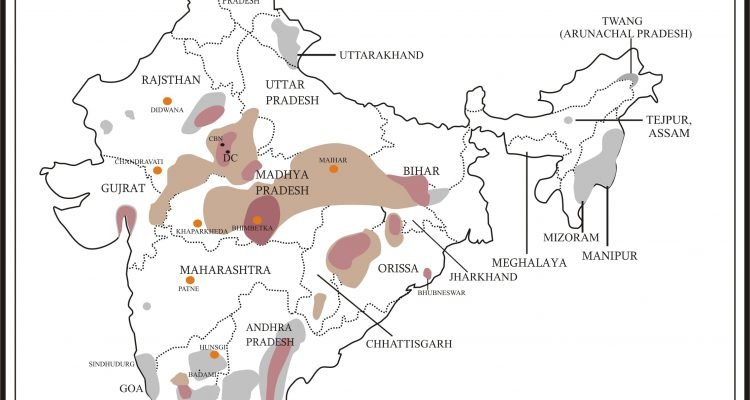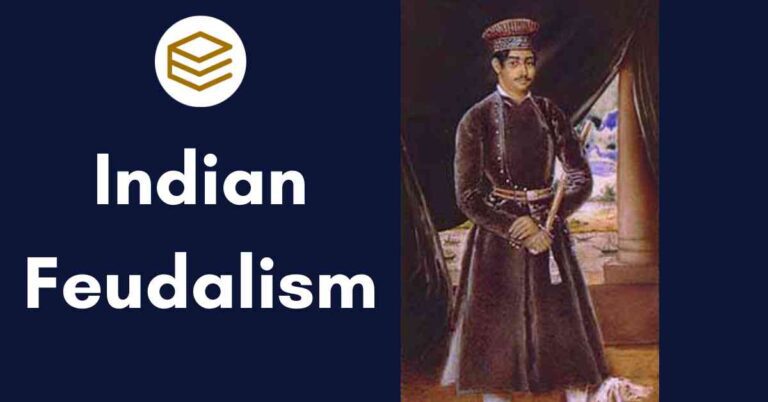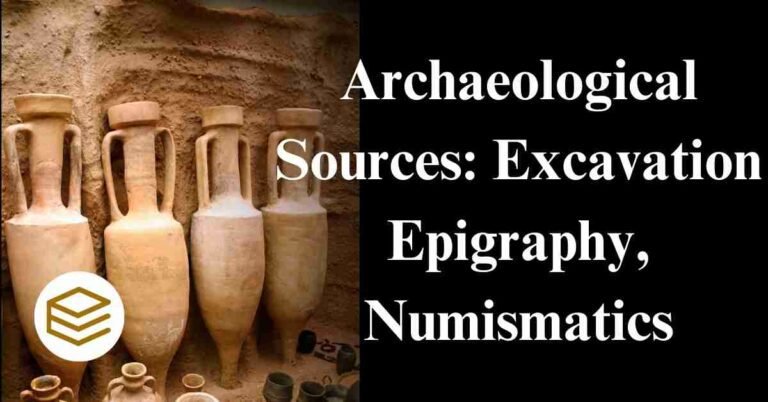July 2, 2025 2:06 am
Introduction
In the distant past, when there was no paper, language, or written records, ancient human lives were documented through tools, pottery, habitats, bones of humans and animals, and most importantly, cave paintings. These rock paintings provide a window into the lifestyle, activities, and mindset of prehistoric humans.

Mesolithic Rock Paintings represents one of the earliest expressions of human creativity and cognition, encapsulating the evolution of human thought and social structures during the transitional phase between the Paleolithic and Neolithic periods. Referred to as Palaeoart, this form of artistic expression is manifested on rock surfaces, including open cliffs, cave walls, and rock shelters. These artworks appear in two primary forms: rock paintings (petrographs) and engravings or cupules (petroglyphs). Beyond their aesthetic appeal, these creations offer invaluable insights into the material culture, rituals, and daily life of Mesolithic societies, serving as a crucial resource for anthropologists and archaeologists in reconstructing early human history. Moreover, when combined with oral traditions, myths, and legends of indigenous communities, these art forms provide a more holistic understanding of early human societies.
When Did the First Rock Art Evolve – Tracing the Origin of Mesolithic art
The exact time when humans first began creating art on rocks is still unclear. There is ongoing debate about whether Homo erectus, the species that came before modern humans, created any form of art during the Lower Paleolithic period. However, archaeologists have discovered finely crafted stone tools in the Narmada Valley that were made by Homo erectus. These tools are not only functional but also display a level of craftsmanship that suggests an appreciation for beauty, hinting at the early development of artistic expression.
It is widely accepted that with the appearance of Homo sapiens—modern humans—during the Upper Paleolithic period around 150,000 years ago, there was a significant leap in brain development, known as neurobiological evolution. This development gave humans the ability to think abstractly and express ideas creatively. These new cognitive abilities allowed humans to move beyond making tools purely for survival and start creating visual art as a form of communication and expression.
This period of rapid brain development set the stage for the next era in human history, known as the Mesolithic period. During the Mesolithic, humans showed clear signs of behavioral, social, and cultural advancements. This is reflected in the art from that time, which includes paintings, carvings, and engravings. These artworks are more than just decorations—they reveal the growing complexity of human societies, the development of symbolic thinking, and the desire to represent the world through creative expression. This is what we refer to as Mesolithic art.
Major Rock Art Sites in India
The rock art of India is widespread, reflecting the diverse geographical and cultural landscapes of the country. While such sites are found across the north, south, east, and west, the central Indian plateau holds the most significant concentration due to its unique geo-environmental conditions. The Vindhya and Satpura ranges, with their natural shelters and caves, provided ideal living spaces for Stone Age hunter-gatherers and later pastoral communities. These areas continue to be inhabited by tribal groups such as the Gond, Muria, Korku, and Bhilala, who preserve aspects of their ancestral traditions.
The table below outlines key rock art sites in India, highlighting their location, geographical features, and historical significance.
Table: Rock Art Sites in India – Location, Features, and Significance
| Region | State | Key Rock Art Sites | Features and Significance |
|---|---|---|---|
| Northern India | Ladakh (J&K), Himachal Pradesh, Manipur | Various sites in Ladakh, Kinnaur, and Spiti Valley | Contains petroglyphs and rock carvings depicting animals, human figures, and abstract symbols. |
| Western India | Rajasthan, Maharashtra, Gujarat | Bhanpura, Chambal Valley, and Ajanta Caves | Features prehistoric paintings and engravings, some of which date back to the Mesolithic and later periods. |
| Eastern India | Jharkhand, Odisha, West Bengal | Hazaribagh, Giridih, Kodarmada, and Chatra | Newly discovered sites with significant Mesolithic and Neolithic rock art, documented by Dr. (Col.) A.K. Prasad. |
| Southern India | Tamil Nadu, Kerala, Andhra Pradesh, Karnataka | Edakkal Caves, Sittanavasal, Kupgal | Rock engravings and prehistoric paintings, particularly in Edakkal Caves, which date back to the Neolithic period. |
| Central India | Madhya Pradesh, Chhattisgarh | Bhimbetka, Pachmarhi, Adamgarh, Daraki Chattan | The most significant cluster of rock art, spanning from the Upper Paleolithic to early historic periods. |

Key Highlights of Rock Art Sites:
- Bhimbetka Rock Shelters (Madhya Pradesh)
- Located in the Vindhyan Range, these shelters are one of the most significant rock art sites globally, with paintings dating from the Upper Paleolithic to the early historic periods.
- Pachmarhi and Adamgarh (Madhya Pradesh)
- Situated in the Satpura ranges, these sites showcase a rich collection of rock paintings, reflecting human activity from the Mesolithic to the Chalcolithic periods.
- Daraki Chattan (Chhattisgarh)
- Known for early petroglyphs, this site holds considerable importance in understanding prehistoric art in the region.
- Jharkhand Sites (Hazaribagh, Giridih, Kodarmada, Chatra)
- These sites have gained recognition in recent years, particularly through the research of Dr. (Colonel) A.K. Prasad, contributing to the understanding of prehistoric life in Eastern India.
These rock art sites not only highlight the artistic abilities of early humans but also provide valuable insights into their cultural, social, and environmental interactions. The continuity of life in some of these regions, with present-day tribal communities maintaining traditional lifestyles, offers a living connection to the past.
Rock paintings from the Mesolithic period have been discovered in several parts of India, including:
- Madhya Pradesh
- Uttar Pradesh
- Andhra Pradesh
- Karnataka
- Bihar
- Uttarakhand (in the Kumaon hills, such as Lakhudiyar)
These paintings allow us to understand the daily life, food habits, and rituals of the people who created them, offering a glimpse into their world.
Themes and Purpose of the Paintings
Once early humans fulfilled their basic needs for food, water, clothing, and shelter, they felt the urge to express their creativity. These rock paintings may have served several purposes, such as:
- Decorating their homes
- Telling stories through pictures
- Recording daily activities or memorable events
The primitive artists seemed to have a passion for storytelling, and some paintings may have been linked to rituals related to hunting or fertility.
Rock Paintings at Bhimbetka
The Vindhya ranges of Madhya Pradesh house some of the richest Mesolithic rock paintings, particularly at Bhimbetka, which contains about 800 rock shelters, 500 of which feature rock paintings. These paintings depict a wide range of activities such as:
- Hunting
- Dancing
- Music
- Riding animals like horses and elephants
- Animal fighting
- Honey collection
- Body decoration
- Household scenes
The Bhimbetka Rock Art
- Location & Importance:
- Bhimbetka, located in Madhya Pradesh, is home to some of the oldest rock art in India.
- It shows how humans lived from the Paleolithic to Mesolithic and into early history.
- Declared a UNESCO World Heritage Site in 2003.
- What’s in the Art:
- 6,214 motifs have been found here.
- Most of the art shows animals (zoomorphs) and humans mixed with animals (anthropomorphs).
- Common scenes include:
- Hunting with bows and arrows.
- Fighting scenes (possibly between groups or within groups).
- Dancing, horse riders with umbrella-like headgear, honey collection, fishing, and wild boar hunting.
- Musical instruments like horns, pipes, drums, and tom-toms.
- Handprints, finger markings, and thumb impressions.
- Colors & Materials Used:
- The earliest paintings were in green, but red ochre (haematite) and white became common.
- Later, black from charcoal or manganese was also used.
- Tools used included fingers, feathers, wooden sticks, peacock feathers, and porcupine quills.
- Why Were These Paintings Made?
- Not just for decoration. They likely had religious or ritualistic meanings.
- The overlapping of old and new paintings suggests they weren’t worried about making things perfect.
- Some believe they were created to escape suffering or to connect with supernatural powers.
Classification of Bhimbetka Rock Art (Development Phases)
- Early Phases (Prehistoric):
- Large animals like buffaloes, elephants, and big cats with geometric patterns.
- Later, smaller animals and humans appeared, often shown hunting in groups.
- Colors like red, white, and green used.
- Over time, the figures became more schematic (simple lines and shapes).
- Transitional Phase (Agriculture Starts):
- Animals with stiff legs, bodies drawn in rectangles.
- Carts and chariots pulled by yoked oxen shown.
- Bovines with humps and decorated horns.
- Historic Phase:
- Riders on horses and elephants.
- Soldiers with spears, swords, and bows.
- Marching bands of soldiers, decorated horses, and group dances.
- Later art became simpler, showing geometric human shapes, religious symbols, and inscriptions.

Significance of the Location
Bhimbetka’s geographical features played a crucial role in its selection as a habitat by early humans:
- Natural Shelters: The rock formations provided safe havens for prehistoric communities, protecting them from harsh weather and predators.
- Proximity to Water Sources: The presence of rivers like the Narmada and Betwa ensured a steady supply of water, vital for sustaining life.
- Rich Flora and Fauna: The dense forests and river ecosystems supported diverse wildlife and plant life, offering ample resources for hunting, gathering, and foraging.
The strategic and ecological advantages of Bhimbetka made it an ideal location for early human settlement, which is reflected in the continuous occupation of the site from the Paleolithic to the early historic periods.
Why is it Called Bhimbetka? The Legend Behind the Name
The name Bhimbetka is deeply rooted in Indian mythology and folklore, drawing a direct connection to the epic of the Mahabharata. The term is believed to originate from “Bhimbethak”, which literally means “the seat of Bhima”. Bhima, the mighty and powerful second brother among the Pandavas, is said to have rested or taken shelter in these caves during their exile. This mythological association adds a layer of cultural and historical significance to the site, blending ancient storytelling with prehistoric archaeology.
Further supporting this connection, nearby locations bear names that resonate with the Pandava legends:
- Pandapur: Suggestive of a place associated with the Pandavas.
- Bhiyanpura: Likely a derivative of Bhimpura, meaning “the town of Bhima”.
These names reflect the oral traditions passed down through generations, intertwining the mythical past with the tangible evidence of prehistoric human habitation found in the rock shelters.
The Discovery of Bhimbetka’s Rock Art
Despite its mythological fame, Bhimbetka’s significance as an archaeological treasure trove remained unrecognized until the mid-20th century. The first recorded mention of Bhimbetka in Indian Archaeological Records dates back to 1888, where it was mistakenly identified as a Buddhist site due to the presence of rock shelters resembling monastic caves. However, the true historical importance of Bhimbetka was uncovered much later.
In 1957-58, renowned archaeologist Dr. Vishnu Wakankar from Ujjain stumbled upon the painted rock shelters while exploring the region. Recognizing the prehistoric value of the site, he led further investigations that revealed Bhimbetka as one of the most significant Mesolithic Rock Paintings sites in the world, with paintings dating back to the Upper Paleolithic period.
Bhimbetka in Local Traditions and Rituals
Before its archaeological importance was known, local villagers were already connected to Bhimbetka, albeit unaware of its prehistoric paintings. The hilltop served as a gathering place for annual fairs, especially during Shivaratri in March, when villagers would come together to celebrate and offer prayers.
A local spiritual figure, Baba Shalik Ram Das, who was both a Shiva devotee and a medicine man, established a small temple within one of the painted rock shelters. He preserved tribal artifacts, such as bows and arrows, within the shelter, maintaining a living connection between the tribal traditions and the ancient site. This blend of spiritual significance and prehistoric heritage makes Bhimbetka a unique site where myth, history, and culture converge.
Techniques and Materials Used
- Color Layers:
- Overlapping layers of red and white.
- Green paintings considered the earliest, though red ochre (haematite) was common.
- Black pigment from charcoal or manganese used in later periods.
- Artistic Tools and Methods:
- Some paintings made using fingers.
- Brushes crafted from feathers, wood, peacock feather stems, or porcupine quills.
- Simplified forms with two or three strokes to depict animals and birds.
- Line sketches and more detailed artworks coexist.
- Observations (K. L. Kamat):
- Many paintings are unplanned with overlapping layers.
- Older artworks were not erased, showing continuous artistic activity.
- Variations in color and style help differentiate periods.
Common Themes in Mesolithic Rock Paintings
- Hunting Scenes:
Hunting is a predominant theme in these paintings. Hunters are shown in groups or individually, sometimes wearing masks or headdresses. They are depicted using various weapons like spears, bows, arrows, and traps. - Animal Depictions:
Animals were a central subject, with 29 species depicted, including deer, leopards, tigers, elephants, rhinoceroses, and antelopes. These animals were shown either in hunting scenes or in peaceful settings, sometimes displaying a tender and affectionate relationship with humans. - Human Activities:
Men, women, and children are shown in daily life activities, including gathering food, preparing meals, and dancing. Men are often depicted hunting, while women are portrayed gathering and preparing food, reflecting a division of labor based on gender.
Layered Paintings and Rituals
In some places, paintings were created in layers, with newer ones painted over older artworks. This could indicate the sacred significance of certain sites, or it may reflect how different generations of people used the same locations over time.

Paintings in Rock Shelter 8, Bhimbetka, India
Why Were These Paintings Made?
- Not Just Decorative:
- Likely created for spiritual or ritualistic purposes.
- Use of colors like red, green, and white often associated with funerary rites.
- Symbolic and Practical Functions:
- Served as an emotional outlet or an escape from suffering.
- Expression of devotion to supernatural entities.
- Means of storytelling, communication, and recording daily life.
- Unique Features:
- No engraved figures in Bhimbetka, unlike other sites such as Pachmarhi.
Pachmarhi Rock Art
Location of Pachmarhi:
- Pachmarhi is in the Satpura range, Madhya Pradesh, and is the only hill station in Central India, known as ‘Satpura ki Rani’.
- The name comes from the Pandav Caves, believed to be linked to the Pandavas from the Mahabharata.
- Discovered in 1857 by Captain James Forsyth of the British Army, it became a sanatorium for British troops.
- Important sites include:
- Jatashankar: Rock formations resembling Lord Shiva’s matted hair and the divine snake Seshnag.
- The valley features ravines, gorges, pools, and waterfalls, making it a natural sanctuary for wildlife.
Shelters, Paintings, and Antiquity:
- Pachmarhi holds rock shelters rich in prehistoric paintings.
- The earliest paintings date back to around 10,000 years ago (Mesolithic period), while others are from 500-800 AD.
- Paintings are mostly in white, often outlined in red.
- Themes include:
- Daily life, hunting scenes, and warfare.
- Battle scenes, musicians, and rituals.
Key Rock Shelter Sites:
- Dhuandhar: Accessible from Apsara Vihar.
- Bharat Neer (Dorothy Deep): Features animal paintings; excavations yielded potshards and microlithic tools.
- Asthachal (Monte Rosa): Four shelters with linear drawings.
- Jambu Dwip Valley: Paintings of animals, humans, and a battle scene.
- Harper’s Cave: Named after the painting of a man playing a harp.
- Chieftain’s Cave: Shows chieftains on horseback in battle.
- Kites Crag: Features white and red-outlined cave paintings.
Who Are the People in the Paintings?
- The paintings reflect the life of ancient tribal communities.
- Today, semi-nomadic tribes still live in the area, such as:
- Gonds
- Kols
- Bhills
- Murias
- Baigas
- Korkus
- Kamaras
- Marias
- Oraons
- These tribes have preserved traditional lifestyles like hunting and shifting cultivation, resembling what is depicted in the rock art.
Adamgarh Rock Art
Location of Adamgarh:
- Located 40 km from Bhimbetka and just 2 km from Hoshangabad, Madhya Pradesh.
- Situated near the Narmada River, along the Nagpur national highway.
- Part of the Satpura Range, known for Stone Age settlements.
Rock Shelters and Paintings:
- Adamgarh features some of the earliest rock art in India, managed by the Archaeological Survey of India (ASI).
- Numerous stone tools from the Upper Paleolithic and Mesolithic periods are found here.
- Mesolithic tools include tiny geometric shapes like trapezes, triangles, and lunates.
Themes in Paintings:
- About 20 painted shelters spread across a 4 square km area.
- Human figures are depicted in various activities:
- Dancing, running, hunting, playing games, wars, and quarrels.
- Colors include deep red, green, white, and yellow.
- Paintings reflect environmental changes over time.
Depicted Animals:
- Domesticated animals: Zebu cattle, buffalo, goats, sheep, pigs, and dogs.
- Wild animals: Monitor lizards, porcupines, wild horses, swamp deer, sambar deer, spotted deer, and Indian wolves.
Antiquity of Adamgarh:
- Radiocarbon dating of the Mesolithic layers:
- 2765±105 BP (TF-116).
- 7450±130 BP (TF-120).
- Microlithic tools made from:
- Chert
- Agate
- Chalcedony
- Quartz
- Jasper
- Carnelian
- Tools measure 1 to 5 cm in length.
- The lifestyle of these people focused on hunting, fishing, and food gathering, as shown in the rock art.
Art on Ostrich Egg Shells
- Ostrich eggshells were used as a canvas for engravings as early as 60,000 years ago.
- Pierre-Jean Texier, a French scholar, found around 270 eggshell fragments in a South African cave.
- Designs included parallel lines, cross-hatching, and intersecting lines.
- These engravings indicate symbolic thinking among early humans.
Indian Context:
- At Patne, Maharashtra, ostrich eggshell engravings dated to 25,000 years BP were authenticated by Robert Bednarik.
- These engravings resemble similar finds in Israel and China.
- At Chandravati, a chalcedony core with geometric engravings was found, believed to be from the Mesolithic period.
- An engraved human tooth and bone artifacts were found at Bhimbetka III A-28.
The Cup-Marks and Petroglyphs
What are Cupules?
- Cupules are small, hemispherical depressions carved into rock surfaces by humans.
- They are one of the oldest known forms of prehistoric art.
- Robert G. Bednarik identified cupules as a significant part of world rock art.
- They are distinguished from natural formations by:
- Signs of hammering like crushed particles and surface bruising.
- Typically have symbolic purposes rather than practical ones.
Conclusion
The Mesolithic rock paintings of India, especially at Bhimbetka, offer a fascinating glimpse into the lives of prehistoric humans. These paintings, through their artistic expression and symbolism, provide valuable insights into the social structure, activities, and spiritual life of early human societies.
Click Below Links to Read and Download as PDF >>
- Indian Feudalism (300-1200 CE)
- Prehistory and Proto-history : A detailed Analysis
- Archaeological Sources: Excavation Epigraphy, Numismatics
- Chanakya’s Arthashastra: A Book on Ancient Indian Statecraft
- Mauryan Empire: Foundation and Expansion
- Megasthenes’ Indika
- Mauryan Art, Architecture, and Sculpture : 4th Century BC Marvels (PDF Download
- Iranian and Macedonian Invasions of India and Their Impact
- Chandragupta Maurya
- Buddhism – An Overview of Ancient Indian Religions
- Jainism : An Overview of Ancient Indian Religions
- Formation of States (Mahajanapadas): Republics and Monarchies
- Expansion of Aryans in India: Migration, Settlement, and Cultural Evolution
- Megalithic culture in India
- Vedic Age in India
- Neolithic Age in India
- Mesolithic Rock Paintings in India
- Paleolithic Age in India
- Harappan Civilization : Date, Extent, and Characteristics
- Chola Empire (9th -13th century AD): Administration, Local Govt., Village Economy, Society
- Early Medieval India (750-1200) – A detailed Overview









[…] Neolithic Age, which followed the Mesolithic, marked the beginning of food production. During this period, human communities transitioned from […]
[…] Mesolithic Rock Paintings in India […]
[…] Mesolithic Rock Paintings in India […]
[…] Mesolithic Rock Paintings in India […]
[…] Mesolithic Rock Paintings in India […]
[…] Mesolithic Rock Paintings in India […]